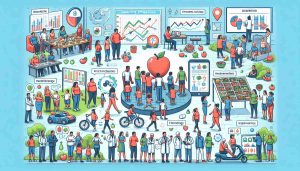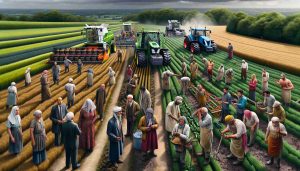Unprecedented Rainfall Ravages Farmland in Midwest Region
3 min read
Unusually heavy precipitation has wreaked havoc on farmland across the Midwest region, leading to widespread flooding and soil erosion. Farming communities in areas such as Hamilton, Butler, Warren, and Montgomery have been severely impacted.
The relentless downpours have saturated the soil, making it nearly impossible for farmers to plant their crops in a timely manner. Agricultural experts are expressing deep concern over the delayed planting season, which could significantly reduce crop yields and threaten the livelihoods of many farmers in the affected counties.
In addition to the challenges posed by the excess rainfall, the flooding has caused extensive damage to farm infrastructure, including equipment and storage facilities. Many farmers are now grappling with the daunting task of rebuilding and repairing their properties in the aftermath of the destructive floods.
Local authorities have been working tirelessly to provide assistance to the affected farmers, offering support in the form of emergency supplies, technical guidance, and financial aid. Despite these efforts, the road to recovery for the farming communities in the Midwest region remains long and arduous as they strive to overcome the unprecedented challenges brought about by the torrential rainfall.
Unprecedented Rainfall Devastates Midwest Farmland, Uncovering New Challenges
The recent surge of rainfall in the Midwest region has inflicted further damage on the already struggling farmland, plunging communities into a deeper crisis. Counties such as Greene, Clark, and Preble have also faced significant repercussions due to the relentless onslaught of precipitation.
What are the implications of the prolonged rainfall for water quality and soil fertility in the affected areas? The excessive rainfall has raised concerns about water quality as runoff from saturated fields can carry pollutants into water bodies. Additionally, the continuous moisture may lead to soil compaction and nutrient leaching, posing threats to soil fertility and agricultural productivity in the long term.
Key Challenges: The prolonged wet conditions not only hinder planting efforts but also increase the risk of crop diseases and pests, further jeopardizing yields and profitability for farmers in the region. Moreover, the extensive flooding has disrupted transportation routes, hindering the distribution of essential supplies and produce to markets, exacerbating the financial strain on farmers.
Advantages: The heightened awareness of climate vulnerability brought about by this crisis may spur more concerted efforts towards sustainable farming practices and infrastructure resilience in the future. It could also prompt increased collaboration between farmers, policymakers, and researchers to develop innovative solutions for mitigating the impact of extreme weather events on agriculture.
Disadvantages: The overwhelming scale of the damage and the prolonged recovery period may strain the resources and resilience of local communities, raising concerns about the long-term viability of agriculture in the affected areas. Farmers may face challenges accessing financial support and technical assistance to rebuild their operations effectively, prolonging the recovery process.
Local farmers, alongside government agencies and non-profit organizations, are mobilizing to address the immediate needs of the impacted communities, emphasizing the importance of disaster preparedness and climate adaptation strategies in agricultural planning.
For further insights on climate-resilient agriculture and disaster response in the face of extreme weather events, visit MidwestFarms.






